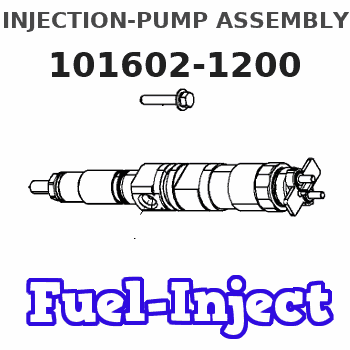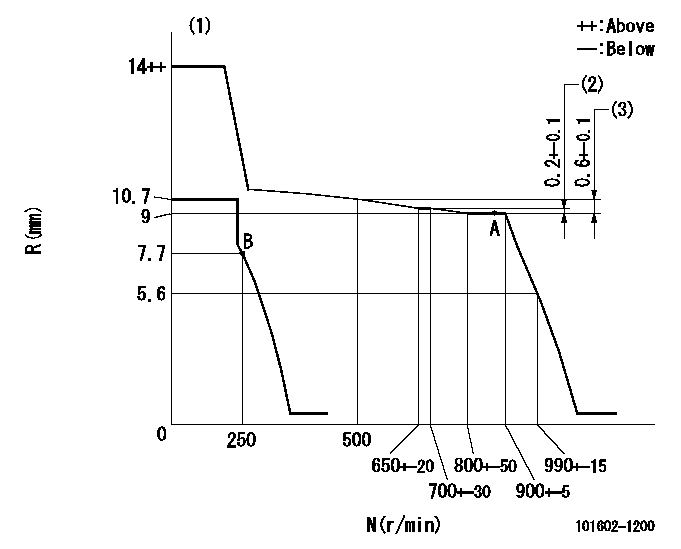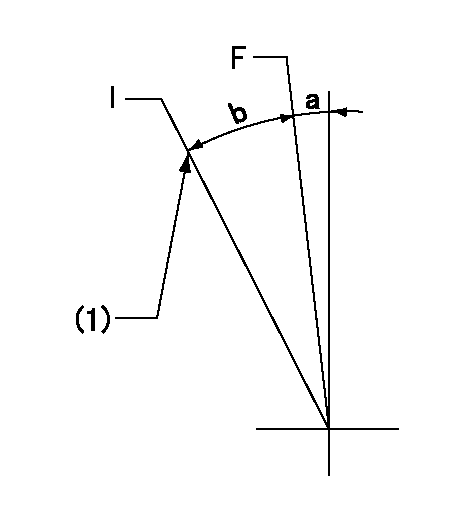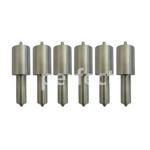Information injection-pump assembly
BOSCH
9 400 614 721
9400614721
ZEXEL
101602-1200
1016021200
MITSUBISHI
ME070913
me070913

Rating:
Service parts 101602-1200 INJECTION-PUMP ASSEMBLY:
1.
_
5.
AUTOM. ADVANCE MECHANIS
6.
COUPLING PLATE
8.
_
9.
_
11.
Nozzle and Holder
ME047488
12.
Open Pre:MPa(Kqf/cm2)
17.7(180)
15.
NOZZLE SET
Cross reference number
BOSCH
9 400 614 721
9400614721
ZEXEL
101602-1200
1016021200
MITSUBISHI
ME070913
me070913
Zexel num
Bosch num
Firm num
Name
101602-1200
9 400 614 721
ME070913 MITSUBISHI
INJECTION-PUMP ASSEMBLY
6D16 K 14BE INJECTION PUMP ASSY PE6A PE
6D16 K 14BE INJECTION PUMP ASSY PE6A PE
Calibration Data:
Adjustment conditions
Test oil
1404 Test oil ISO4113 or {SAEJ967d}
1404 Test oil ISO4113 or {SAEJ967d}
Test oil temperature
degC
40
40
45
Nozzle and nozzle holder
105780-8140
Bosch type code
EF8511/9A
Nozzle
105780-0000
Bosch type code
DN12SD12T
Nozzle holder
105780-2080
Bosch type code
EF8511/9
Opening pressure
MPa
17.2
Opening pressure
kgf/cm2
175
Injection pipe
Outer diameter - inner diameter - length (mm) mm 6-2-600
Outer diameter - inner diameter - length (mm) mm 6-2-600
Overflow valve
131424-5520
Overflow valve opening pressure
kPa
255
221
289
Overflow valve opening pressure
kgf/cm2
2.6
2.25
2.95
Tester oil delivery pressure
kPa
157
157
157
Tester oil delivery pressure
kgf/cm2
1.6
1.6
1.6
Direction of rotation (viewed from drive side)
Left L
Left L
Injection timing adjustment
Direction of rotation (viewed from drive side)
Left L
Left L
Injection order
1-5-3-6-
2-4
Pre-stroke
mm
3.3
3.25
3.35
Beginning of injection position
Governor side NO.1
Governor side NO.1
Difference between angles 1
Cal 1-5 deg. 60 59.5 60.5
Cal 1-5 deg. 60 59.5 60.5
Difference between angles 2
Cal 1-3 deg. 120 119.5 120.5
Cal 1-3 deg. 120 119.5 120.5
Difference between angles 3
Cal 1-6 deg. 180 179.5 180.5
Cal 1-6 deg. 180 179.5 180.5
Difference between angles 4
Cyl.1-2 deg. 240 239.5 240.5
Cyl.1-2 deg. 240 239.5 240.5
Difference between angles 5
Cal 1-4 deg. 300 299.5 300.5
Cal 1-4 deg. 300 299.5 300.5
Injection quantity adjustment
Adjusting point
A
Rack position
9
Pump speed
r/min
875
875
875
Average injection quantity
mm3/st.
60.3
59.3
61.3
Max. variation between cylinders
%
0
-2.5
2.5
Basic
*
Fixing the lever
*
Injection quantity adjustment_02
Adjusting point
B
Rack position
7.7+-0.5
Pump speed
r/min
250
250
250
Average injection quantity
mm3/st.
9.2
7.7
10.7
Max. variation between cylinders
%
0
-15
15
Fixing the rack
*
Test data Ex:
Governor adjustment

N:Pump speed
R:Rack position (mm)
(1)Target notch: K
(2)Rack difference between N = N1 and N = N2
(3)Rack difference between N = N3 and N = N4
----------
K=5 N1=875r/min N2=670r/min N3=875r/min N4=500r/min
----------
----------
K=5 N1=875r/min N2=670r/min N3=875r/min N4=500r/min
----------
Speed control lever angle

F:Full speed
I:Idle
(1)Stopper bolt setting
----------
----------
a=4deg+-5deg b=14deg+-5deg
----------
----------
a=4deg+-5deg b=14deg+-5deg
Stop lever angle

N:Pump normal
S:Stop the pump.
----------
----------
a=26deg+-5deg b=53deg+-5deg
----------
----------
a=26deg+-5deg b=53deg+-5deg
Timing setting

(1)Pump vertical direction
(2)Position of coupling's tooth at No 1 cylinder's beginning of injection
(3)B.T.D.C.: aa
(4)-
----------
aa=18deg
----------
a=(2deg)
----------
aa=18deg
----------
a=(2deg)
Information:
Oils that have more than 1% total sulfated ash should not be used in aftertreatment device equipped engines.In order to achieve expected ash service intervals, performance, and life, aftertreatment device equipped diesel engines require the use of Cat DEO-ULS or oils meeting the Cat ECF-3 specification and the API CJ-4 oil category. Use of oils with more than 1% total sulfated ash in aftertreatment device equipped engines will cause the need for more frequent ash service intervals, and/or cause loss of performance. Refer to your engine specific Operation and Maintenance Manual, and refer to your aftertreatment device documentation for additional guidance.
API category oils that have not met the requirements of at least one Cat ECF specification may cause reduced engine life.
In selecting oil for any engine application, both the oil viscosity and oil performance category/specification as specified by the engine manufacturer must be defined and satisfied. Using only one of these parameters will not sufficiently define oil for an engine application.
In order to make the proper diesel engine oil viscosity grade choice, refer to the applicable “Lubricant Viscosities for Ambient Temperatures” table in this Special Publication.
Failure to follow these oil recommendations can cause shortened engine service life due to deposits and/or excessive wear.
Total Base Number (TBN) and Fuel Sulfur Levels for Direct Injection (DI) Diesel Engines
The minimum required Total Base Number (TBN) for oil depends on the fuel sulfur level. The TBN for new oil is typically determined by the "ASTM D2896" procedure. For direct injection engines that use distillate fuel, the following guidelines apply.
Table 3
TBN recommendations for applications in Cat engines
Fuel Sulfur Level percent (ppm) Cat Engine Oils TBN of Commercial Engine Oils
≤0.05 percent (≤500 ppm) Cat DEO-ULS, Cat DEO Min 7
0. 1 - 0.05 percent (1000-500 ppm) Cat DEO-ULS, Cat DEO Min 7
Above 0.1 percent (above 1000 ppm) Cat DEO Min 10 Reaching one half of new oil TBN is one of the condemning factors for diesel engine oil. In order to help provide the best protection for your engine, Cat S O S Services oil analysis is the preferred method for determining oil life. TBN of the oil is typically measured using "ASTM D2896" and/or the "ASTM D4739" test methods. It is recommended to change the oil when one half of new oil TBN with either method is reached.For example, new oil with a TBN of 10 by "ASTM D2896" should be changed when, during use, the TBN deteriorates to 5 as determined by the "ASTM D2896" test method. New oil with a TBN of 10 by "ASTM D4739" should be changed when, during use, the TBN deteriorates to 5 as determined by the "ASTM D4739" test method.Note: TBN is also commonly referred to as Base Number (BN).Excessive piston deposits can be produced by oil with a high TBN and/or high ash. These deposits can lead to a loss of control of the oil consumption and to the polishing of the cylinder bore.The use of Cat S O S Services oil analysis helps the environmental
Have questions with 101602-1200?
Group cross 101602-1200 ZEXEL
Mitsubishi
101602-1200
9 400 614 721
ME070913
INJECTION-PUMP ASSEMBLY
6D16
6D16
